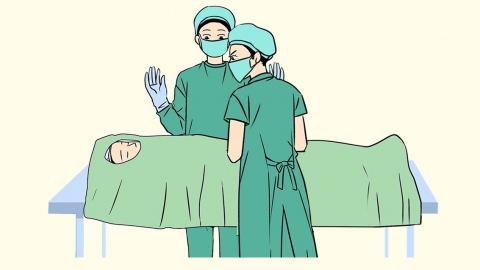Where is the incision made for gallstone surgery?
Generally, the incision site for gallstone surgery depends on the surgical approach and the patient's specific condition. Common incision sites include below the right costal margin, mid-upper abdomen, laparoscopic ports in the right upper quadrant, the umbilicus, and below the xiphoid process. Detailed explanations are as follows:

1. Below the Right Costal Margin
This area is close to the location of the gallbladder, which lies beneath the liver in the right upper abdomen. An incision here provides direct access to the gallbladder, facilitating surgical manipulation. Traditional open cholecystectomy often uses this site, especially suitable for patients with large stones, severe gallbladder inflammation, or other complicated conditions. The clear surgical field allows effective treatment of the lesion, making this a common choice for open procedures.
2. Mid-Upper Abdomen (Midline)
When gallstones lead to common bile duct stones or when anatomical variations are present, a midline incision in the upper abdomen may be chosen. This approach provides better exposure of the bile duct, allowing the surgeon to examine the duct and remove stones effectively. It also enables simultaneous gallbladder removal, making it ideal for patients requiring treatment of both gallbladder and bile duct issues.
3. Laparoscopic Port in the Right Upper Quadrant
Laparoscopic surgery requires several small abdominal incisions, one of the key ports being placed in the right upper quadrant. Aligned with the gallbladder’s position, this port allows insertion of surgical instruments for dissection and removal of the gallbladder, working in coordination with other ports to complete the procedure. This approach minimizes surgical trauma and promotes faster recovery, making it a standard component of laparoscopic cholecystectomy.
4. Umbilicus
The umbilicus is another common site for a laparoscopic port. The natural skin folds around the navel can conceal the incision, resulting in minimal visible scarring and improved cosmetic outcomes. Additionally, inserting the laparoscope through the umbilicus provides a clear view of the abdominal cavity, guiding instrument placement at other ports during gallbladder removal. This site is particularly favored by patients concerned about postoperative appearance.
5. Subxiphoid Area (Below the Xiphoid Process)
Located near the neck of the gallbladder, a small subxiphoid incision is sometimes used in laparoscopic surgery. It aids in retracting the gallbladder to improve surgical visibility or facilitates handling stones lodged in the gallbladder neck. This port enhances precision in manipulating critical areas of the gallbladder, improving surgical efficiency and safety, and is therefore used in selected laparoscopic cases.
In addition, the final decision on incision placement is made by the surgeon based on factors such as stone size and location, severity of gallbladder inflammation, and the chosen surgical method. Patients should have thorough discussions with their surgeons before surgery to understand the exact incision sites and postoperative care instructions, helping them prepare adequately for both the procedure and recovery.




